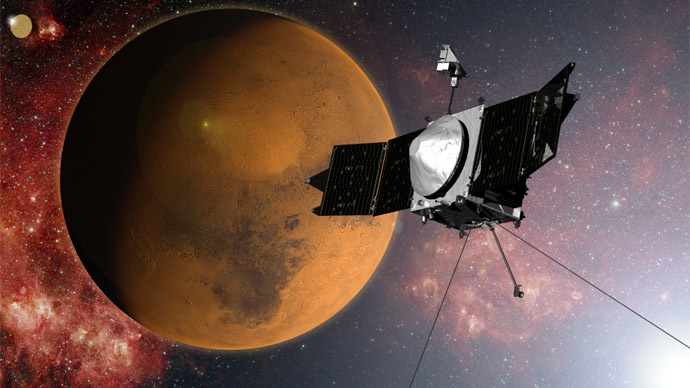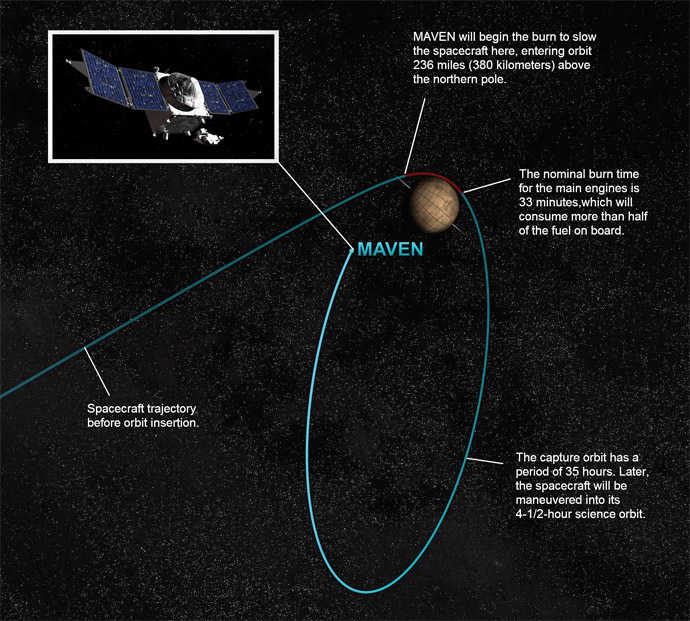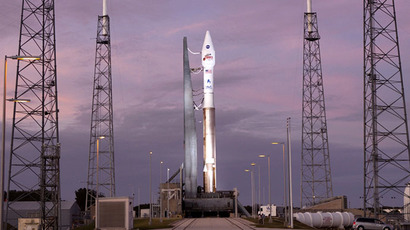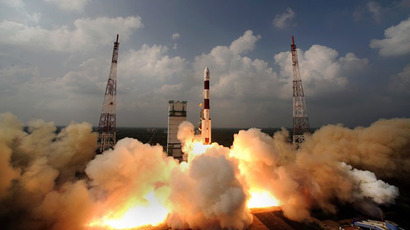NASA spacecraft enters Martian orbit in search of lost water

NASA’s Maven spacecraft has arrived into Martian orbit after a 10-month journey from Earth to find out how all the water on Mars mysteriously disappeared.
READ MORE: NASA launches Maven to reveal Mars’ biggest secret (VIDEO)
Mars Atmosphere and Volatile Evolution (Maven) reached its destination - the insertion point - at around 9:50 p.m. EDT.
The spacecraft fired six small thruster engines in order to slow down, which will burned for 33 minutes. This consumed more than half of the fuel on board to stabilize the craft, so it can be pulled into an elliptical orbit.
NASA aired live footage of Maven mission's command and control center following the process.
The team is seen celebrating @MAVEN2Mars' insertion around #Mars tonight @LockheedMartin mission control pic.twitter.com/I0qar0o0la
— NASA (@NASA) September 22, 2014
"I don't have any fingernails anymore, but we made it," Colleen Hartman, NASA deputy director for science at Goddard Space Spaceflight Center in Greenbelt, Md., said following the broadcast of the spacecraft's arrival.
Maven began its journey on November 18, 2013, launched from Cape Canaveral, Florida. It carries three instrument packages.
The craft has travelled 442 million miles (711 million km) from Earth in order to spend one year researching the Martian upper atmosphere. Its mission is to figure out where all the water on Mars disappeared to – making it the first spacecraft of this kind in history.

“The Maven science mission focuses on answering questions about where did the water that was present on early Mars go, about where did the carbon dioxide go,” said Bruce Jakosky, Maven principal investigator from the University of Colorado, Boulder's Laboratory for Atmospheric and Space Physics. “These are important questions for understanding the history of Mars, its climate, and its potential to support at least microbial life.”
READ MORE: $7 bln NASA Mars Mission rocket set for 2018 launch
Maven will measure the composition, structure, and escape of gases in Mars’ upper atmosphere and how it all interacts with the sun and solar wind.
In the next six weeks, the spacecraft will maneuver itself into its final orbit, which comes as close as 93 miles (150 km) from Mars’ surface.
Before the entry into orbit, Maven was functioning normally and was ready for insertion, project manager at NASA’s Goddard Space Flight Center in Greenbelt, Maryland, David Mitchell said. “So far, so good with the performance of the spacecraft and payloads on the cruise to Mars...The team, the flight system, and all ground assets are ready for Mars orbit insertion.”
Maven’s entry is being closely watched since only seven out of the ten orbiters sent previously by NASA have been successful.
Meanwhile, Maven will be joined by India’s first Mars probe later in the week, which is scheduled to arrive on Wednesday.
READ MORE: India’s first mission to Mars blasts out of Earth’s orbit














